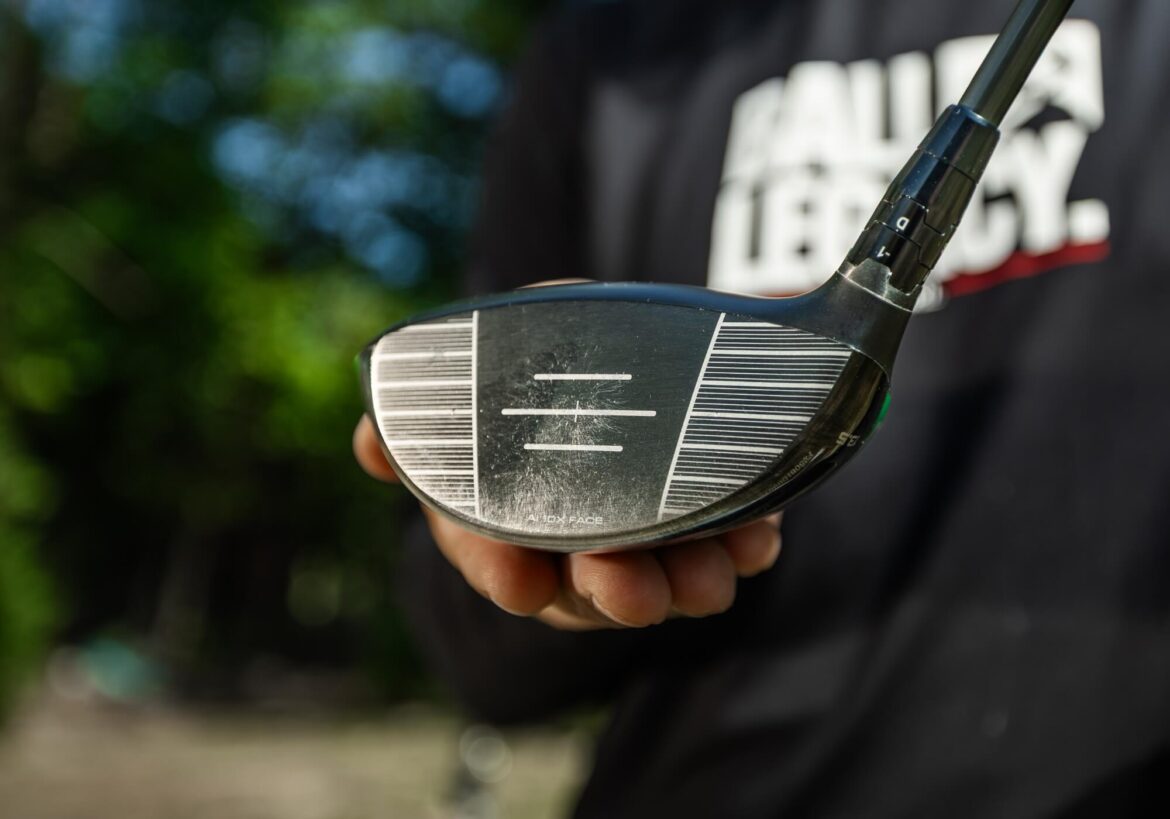Launch monitors have changed the game. Golfers can now see every number imaginable: ball speed, launch angle, spin rate, angle of attack, smash factor … the list goes on.
But access to data doesn’t automatically fix your golf swing.
The real challenge is understanding what those numbers mean and how to use them. Too many golfers look at a readout, see 12-degree launch, 2,800 rpm spin, and wonder if that’s “good.” It depends entirely on your swing speed, strike location and how the club is delivered at impact.
If you’re serious about dialing in your driver, knowing your optimal launch and spin windows is a good place to start.
Optimal launch and spin chart
Below is a simplified chart based on TrackMan data. These numbers assume a centered strike and a neutral to slightly positive angle of attack.
| Swing Speed (Driver) | Optimal Launch (°) | Optimal Spin (rpm) | Notes |
|---|---|---|---|
| Very Fast (105 + mph) | 10 – 16 | 1750 – 2300 | Tour-level or elite players. Low spin with a mid-low launch produces maximum total distance. |
| Fast (97 – 104 mph) | 12 – 16 | 1950 – 2500 | High-amateur and college players. Neutral or slightly positive attack angles create ideal carry. |
| Average (84 – 96 mph) | 13 – 16 | 2400 – 2700 | Most male amateurs. Balanced launch and moderate spin give the best mix of carry and roll. |
| Slow (72 – 83 mph) | 14 – 19 | 2600 – 3000 | Slower swings need higher launch and extra spin to stay airborne longer. |
| Women (< 72 mph) | 14 – 19 | 2900 – 3400 | Added spin helps maintain lift and consistent carry. |
This is a framework or a baseline but it doesn’t work for every player. Golfers with the same swing speed can still have completely different results depending on their angle of attack, dynamic loft and impact pattern.
How angle of attack changes the whole equation
Your angle of attack (AoA), the vertical direction the club is moving at impact, plays a huge role in launch and spin.
- Negative AoA (hitting down): Increases spin and lowers launch. It’s often more controlled but shorter.
- Positive AoA (hitting up): Raises launch and reduces spin, producing higher carry and total distance.
TrackMan’s optimizer shows that just changing AoA, without swinging faster, can add yardage.
At 95 mph club speed:
- –5° AoA: ~9.9° launch / 3630 rpm spin
- +5° AoA: ~15.7° launch / 2595 rpm spin
That difference can equal 20 to 30 yards of carry. If you’ve been chasing speed without much success, it may be time to check on your delivery.
Spin loft: The real reason your ball balloons
“Spin loft” is the difference between your attack angle and your dynamic loft at impact.
Here’s why that matters.
- A big spin-loft gap (steep swing, lots of loft) sends spin skyrocketing; the ball climbs and stalls.
- A small spin-loft gap (shallow swing, delofted face) lowers spin, but too little, and the ball drops out of the air.
Tour players control these variables better than amateur players. They swing fast and up on the ball, keeping spin loft tight enough to stay in that 2,000- to 2,500-rpm range. Amateurs often hit down and add loft, creating excess spin that robs distance.
What PING’s data tells us about real-world performance
PING’s Proving Grounds research found that the average PGA Tour player’s launch conditions are roughly 10.4-degrees launch and 2,760 rpm spin, which produces about 295 yards total.
But when their engineers modeled optimized numbers (slightly higher launch, slightly lower spin), the projected total distance increased by roughly 10 to12 yards.
Even elite players leave yards on the table when launch and spin don’t quite line up. The average golfer, who typically hits down with too much spin, has even more to gain than the professionals.
Final thoughts
Your launch monitor data is only as useful as your ability to interpret it.
If your drives climb too high and seem to stall, don’t assume you need a “low-spin” ball or a stiffer shaft. Check your spin loft and AoA. You may just be delivering the club with too much loft or a downward strike.
If your drives are too flat and fall out of the air, add a degree or two of loft or raise your tee height. You’ll likely gain launch without adding unwanted spin.
The post Optimal Launch And Spin Chart for Drivers: Are You In The Right Range? appeared first on MyGolfSpy.
